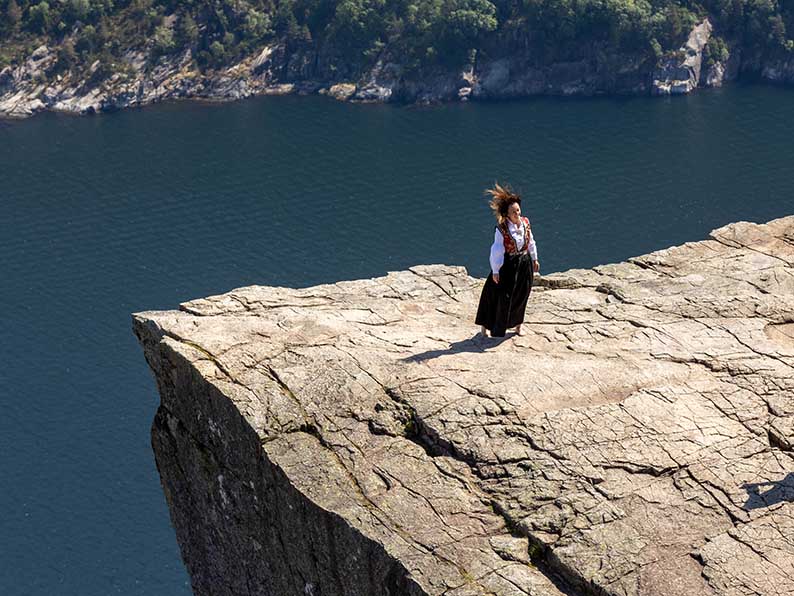
Constitution Day is a big deal here. Every year, on May 17, Norwegians dress in traditional attire to mark the second oldest written constitution still in use. Signed in 1814, thirteen months and a day before her French ally’s nemesis by the forces of reaction at Waterloo, it declared Norway’s independence to avoid being ceded to Sweden after Denmark-Norway’s crushing defeat in the Napoleonic Wars.
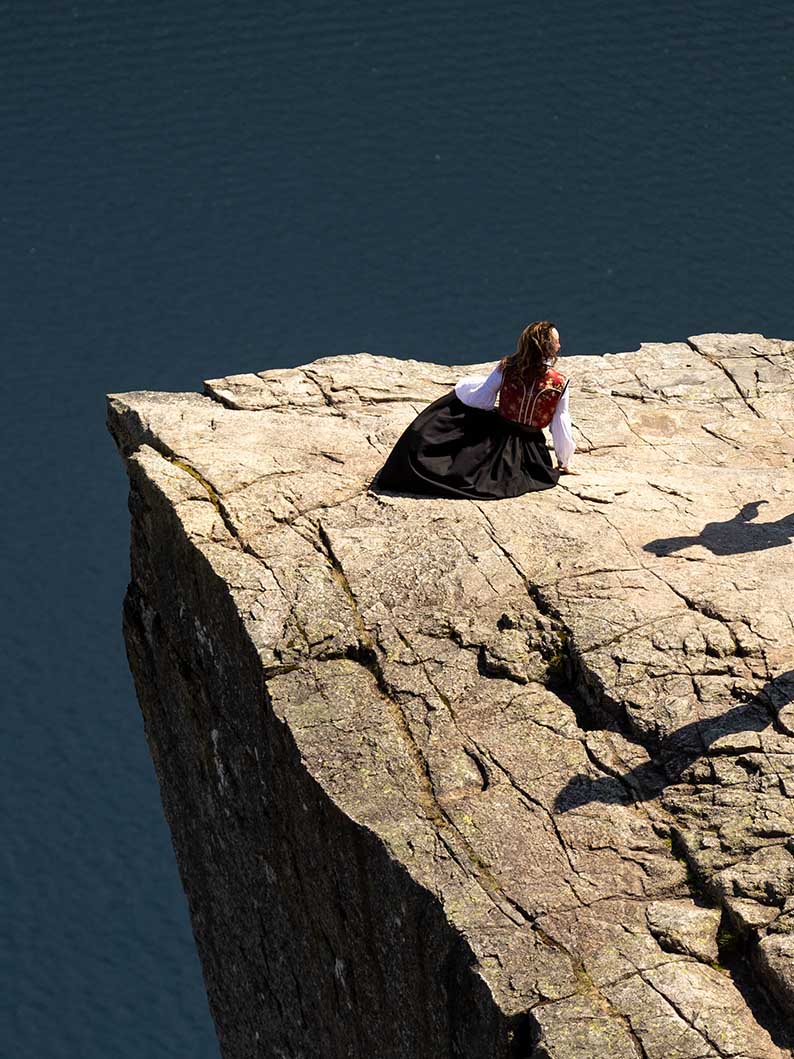
For 2024 this lady took herself and a photographer up Preikestolen. As did Jackie.

More widely known as Pulpit Rock, Preikestolen towers 604 metres or 1,963 feet above a 400 metre deep Lysefjord.
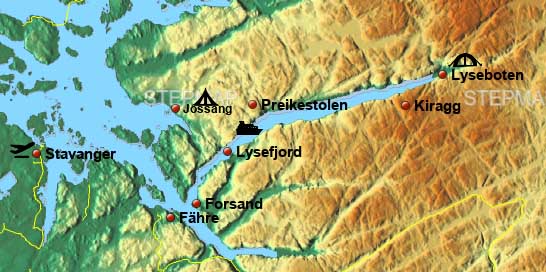
That’s Norwegian for “Fjord of Light”, named after the way east-facing aspects of the west bank – the fjord slants south-southwest to east-northeast – can, when wet rock is lit by a rising sun, reflect the latter in a blinding shimmer.

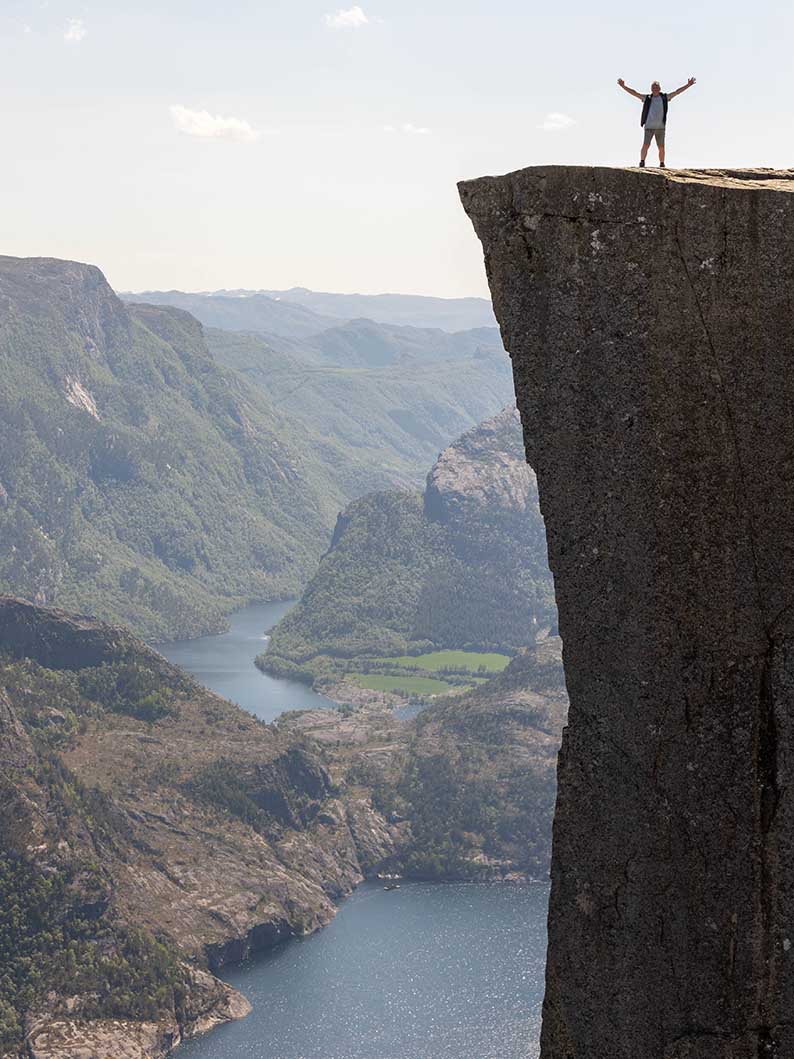
Two sheets of water: the higher is fresh, the lower sea fjord
The following day we sped out on a RIB boat …
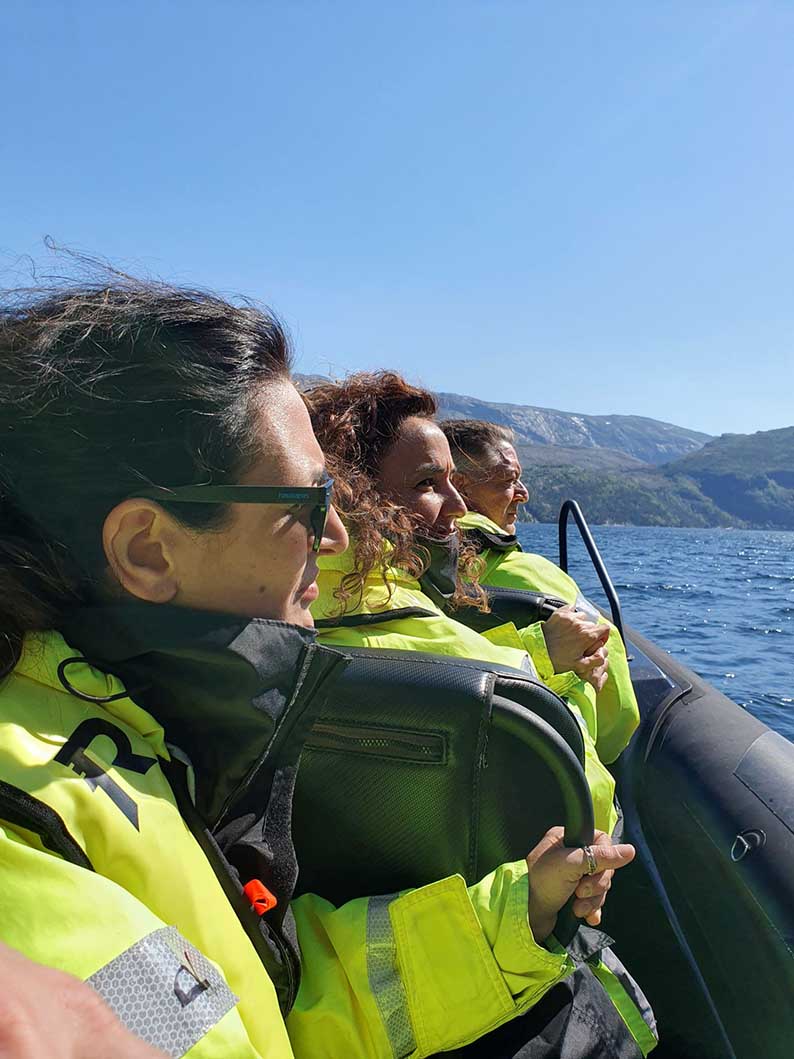
… to see Pulpit Rock from below …
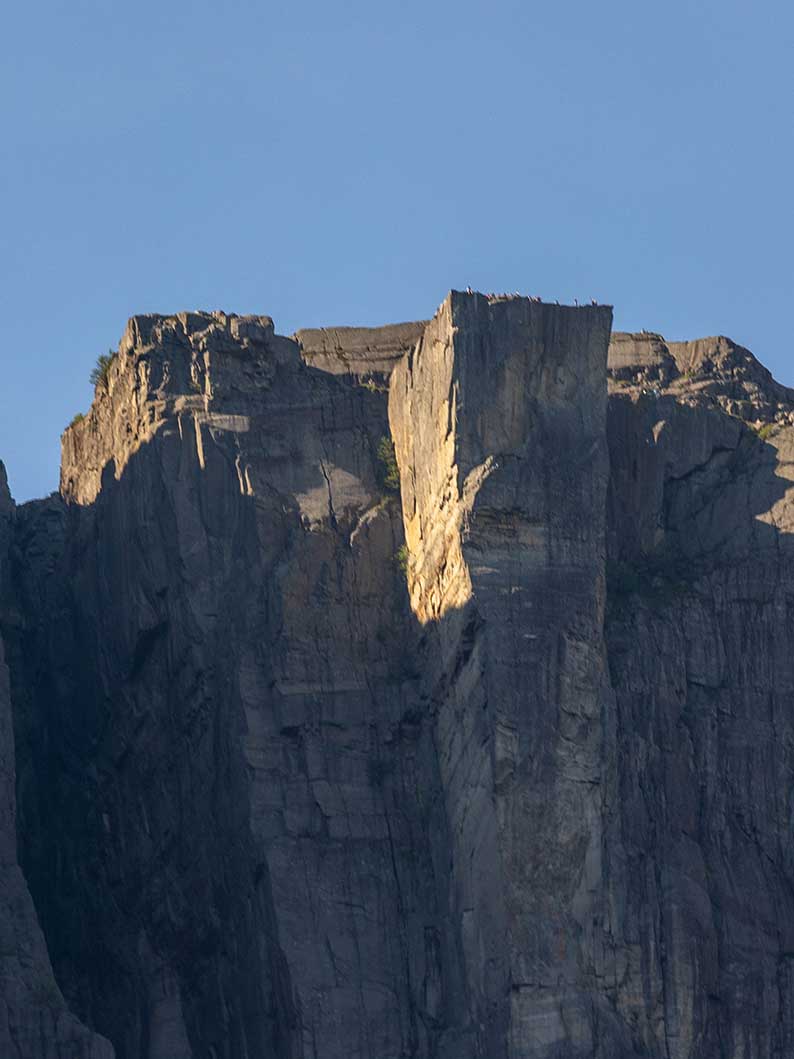

… while taking in a waterfall or two.
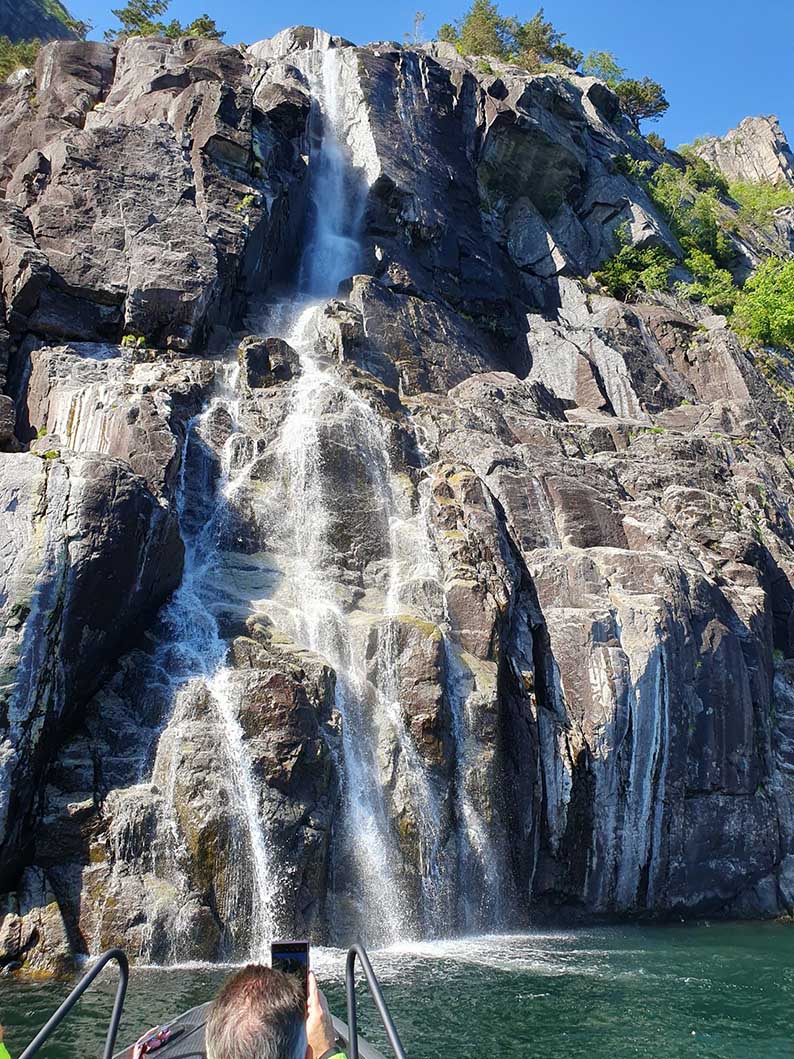
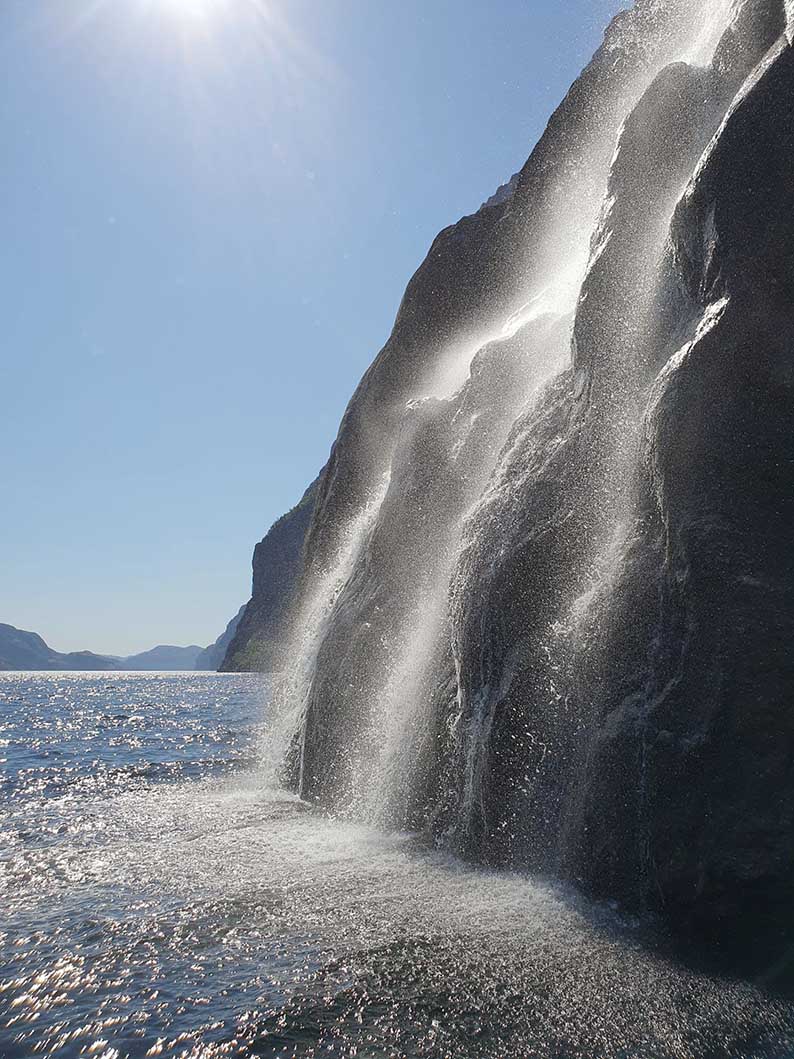
But how to explain this?

Alex, our skipper and guide, directed our gaze two hundred metres above the fjord …
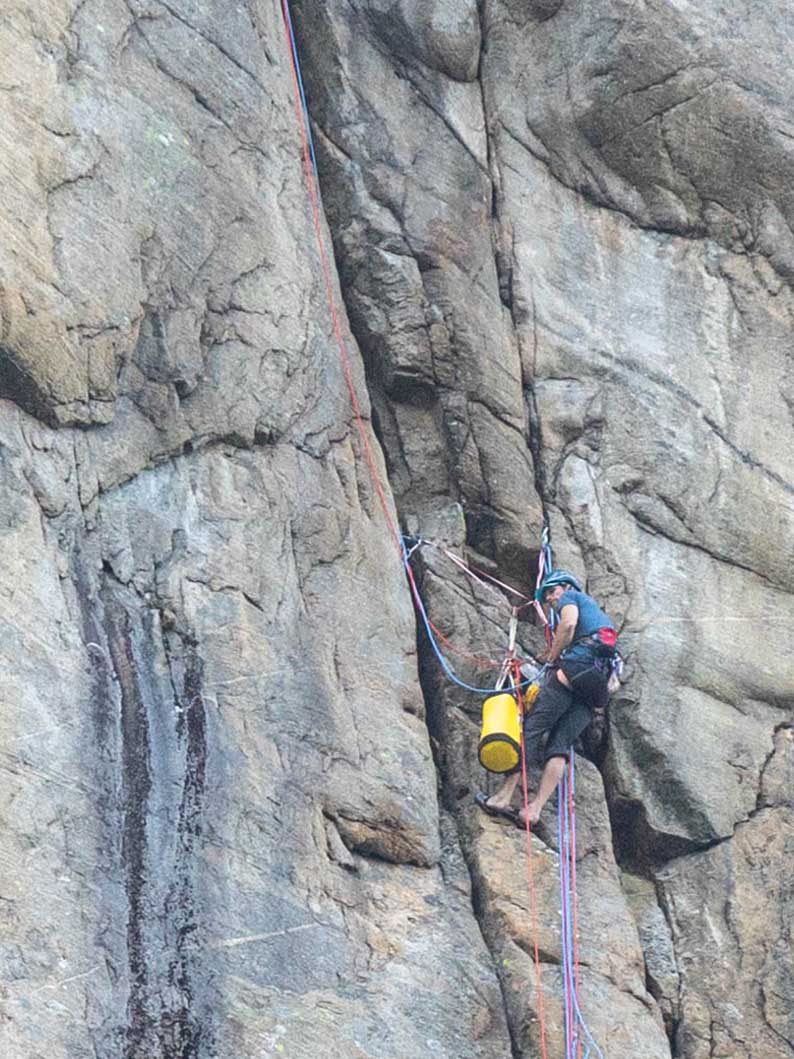
… and then another hundred.
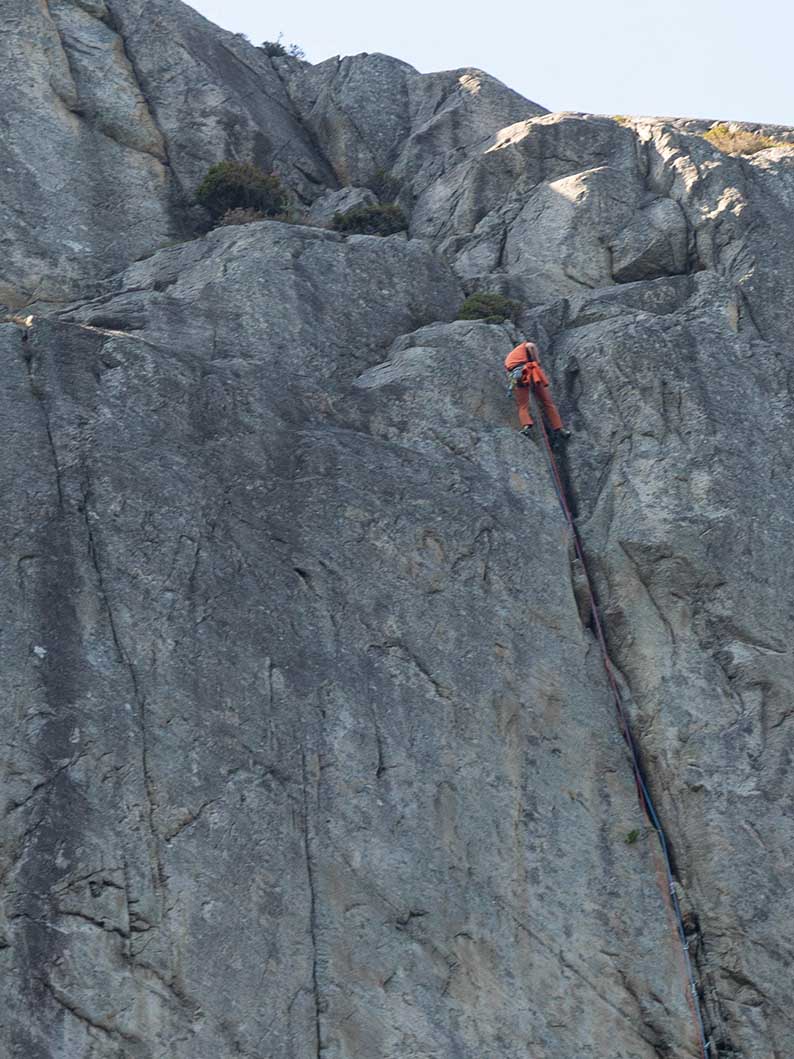
Mountain rescue, he told us. In training.
But back to the day before, Constitution Day. Our guide, thirty-something Alan, collected Jackie and me from our Stavanger hotel at 07:00. With him was twenty-something Shipra, the only other person taking the trek up Priekestolen.
A full group is eight plus guide but it seems our host company, Viator, never cancels on ground of insufficient attendees even if that means running at a loss. On occasion, he told us, Alan has led groups of one. This is as good a place as any to sing the man’s praises. His knowledge of such relevant disciplines as botany and geology is prodigious, likewise his high level of culture – from mathematical modelling to Shakespeare to The Wire to The Four Yorkshiremen sketch – but lightly worn. He made a most agreeable companion, as well as inspiring trust from the outset in his competence, judgment and, of course, intimate acquaintance with the terrain.
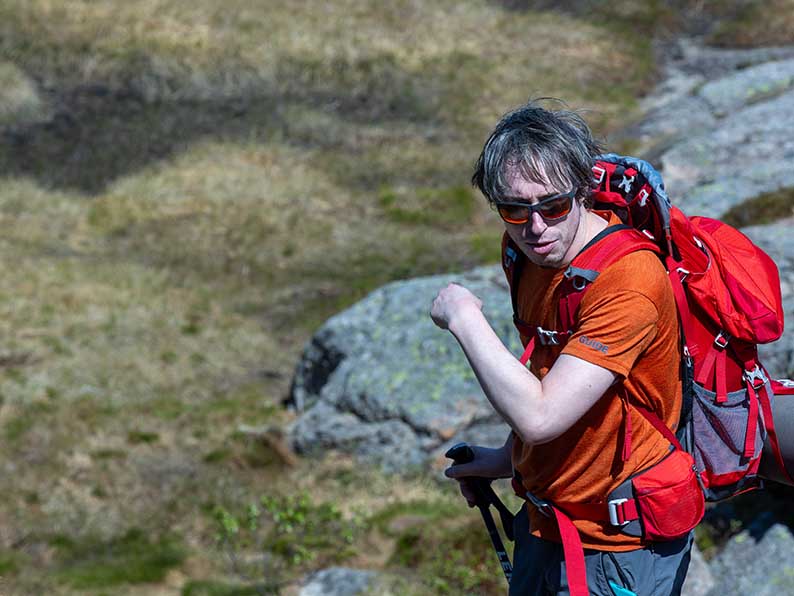
We drove 39km through silent bank holiday streets and one of Norway’s longest tunnels, hewn through granite by and beneath the fjord, to arrive at “base camp” around 08:00. From there we ankled half a kilometer to a freshwater lake where two Canadian style canoes awaited, as did paddles and life vests. This trek begins with a half hour on the water to a spot, inaccessible on foot, where a trail known only to the cognoscenti avoids a main route – certain to serve hordes of hikers on this of all days – to mark a steep ascent through woods deciduous then ever-geen, and over scree. Thence via moorland to gigantic glacially strewn boulders, sheer precipices and heart-stopping vistas.
Between taking to the water, and arriving at Pulpit Rock, we saw just two other human beings.
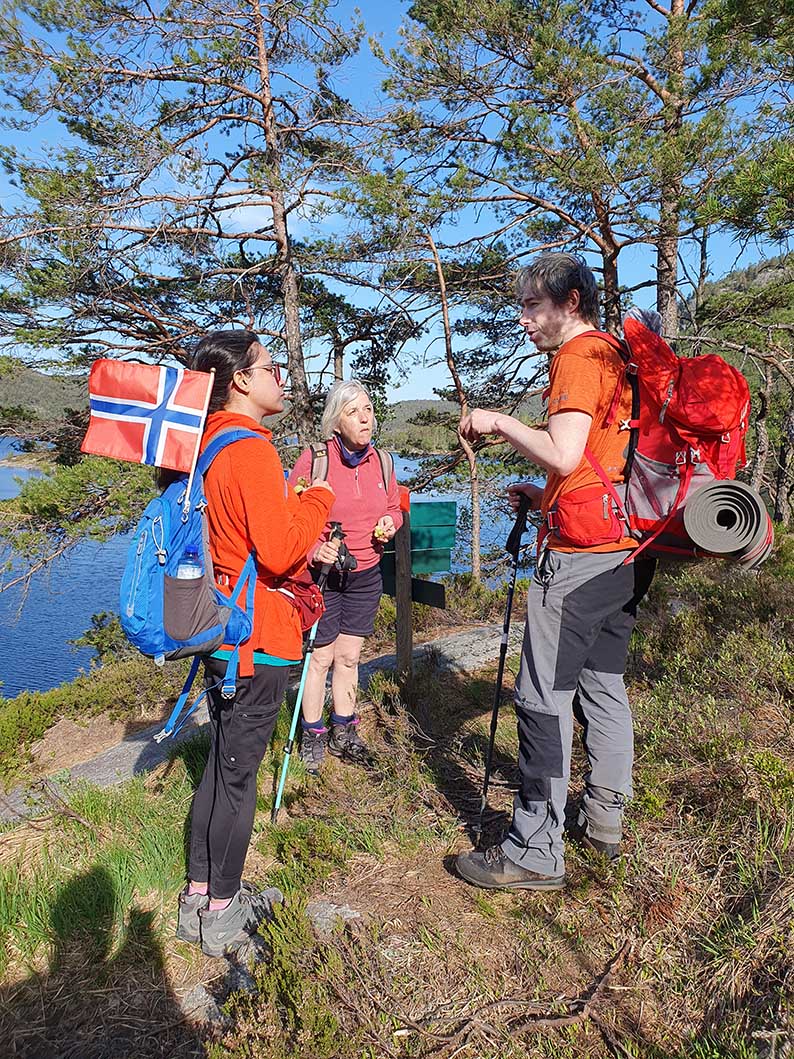
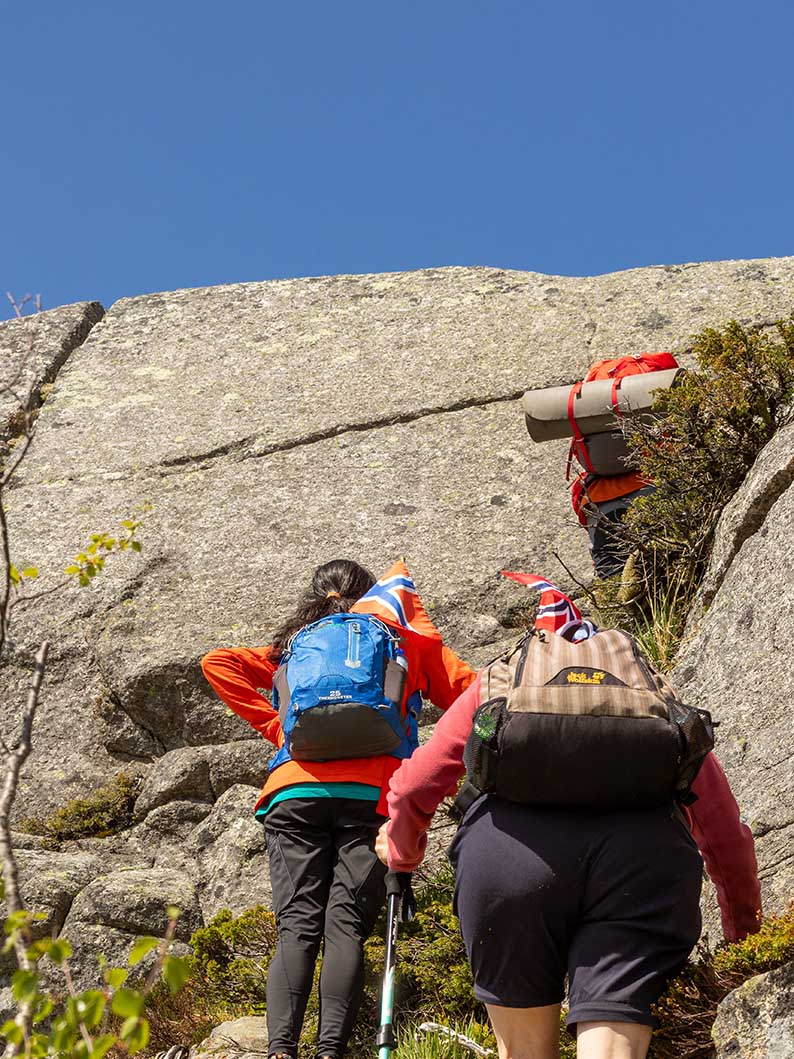
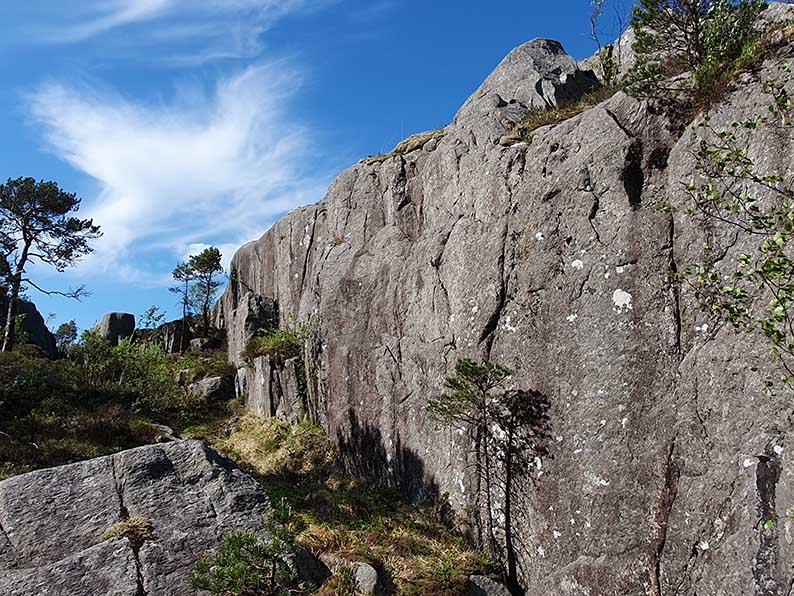
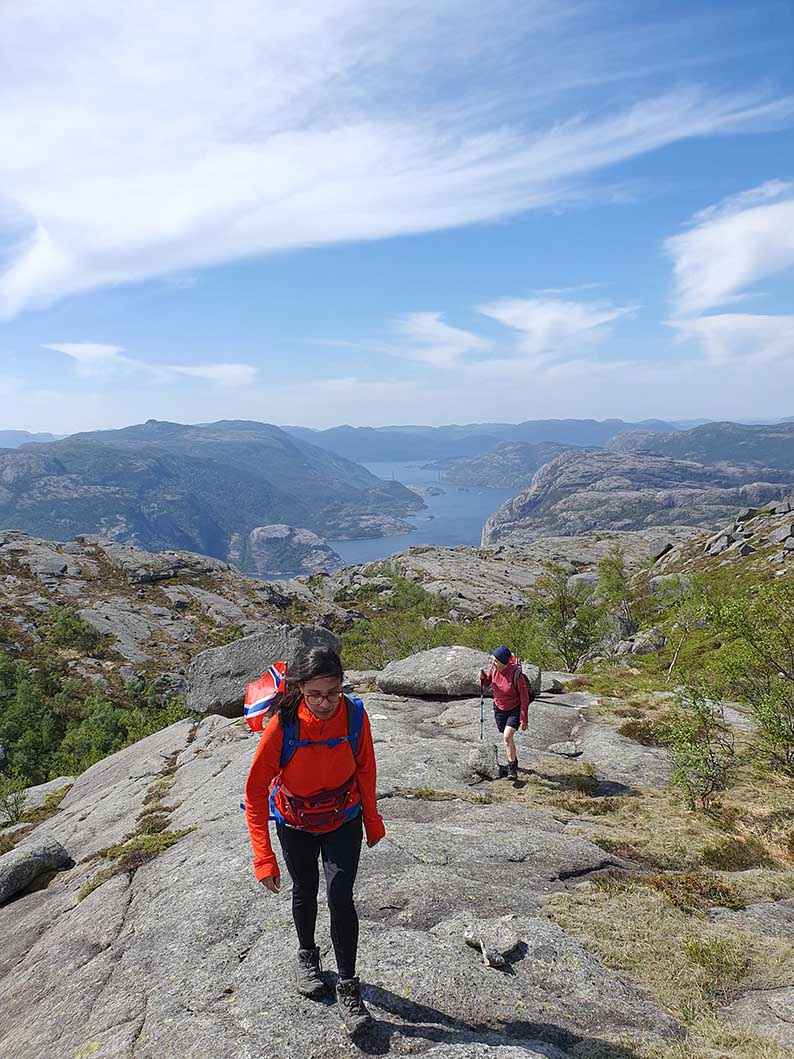

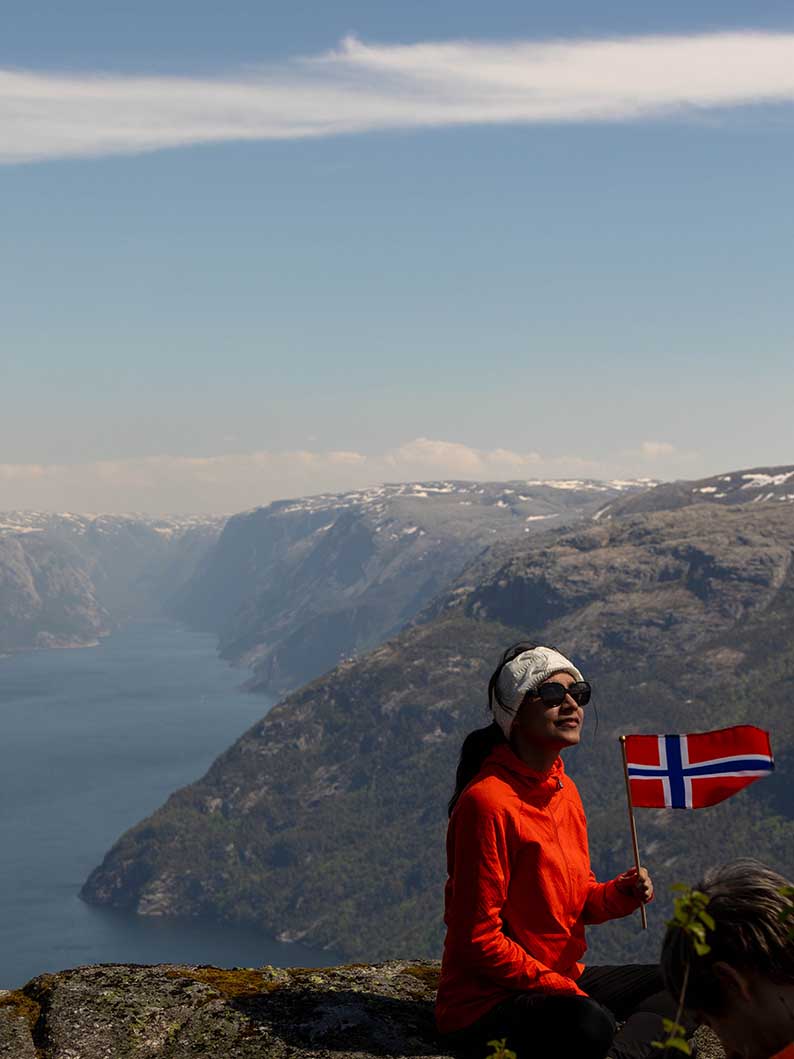
Shipra, from Uttar Pradesh but working as a microbiologist in Trondheim, flew the flag for Norway. Like Alan, she’s a joy to hike with.
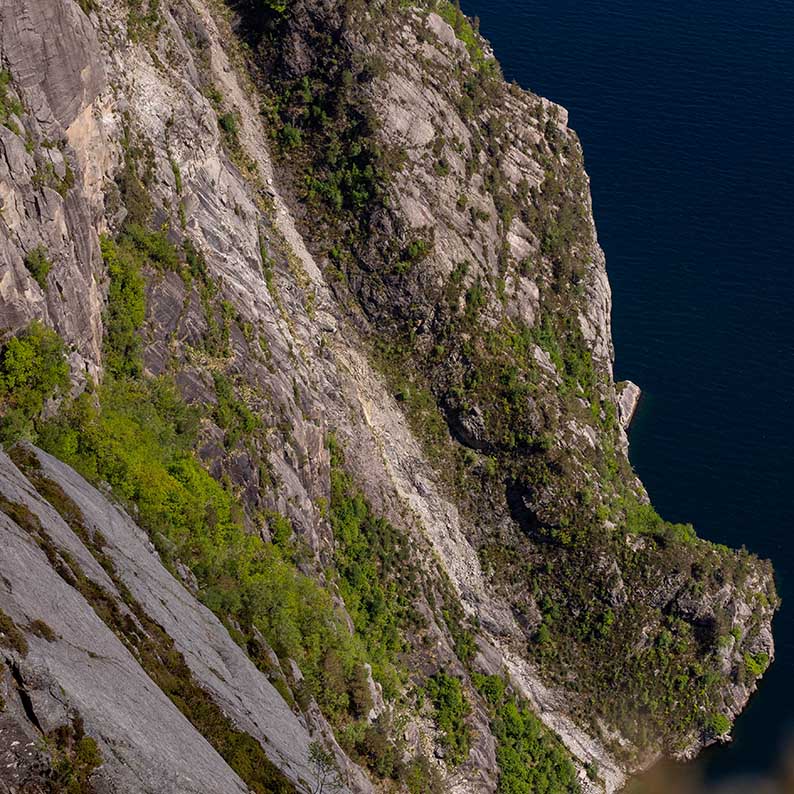
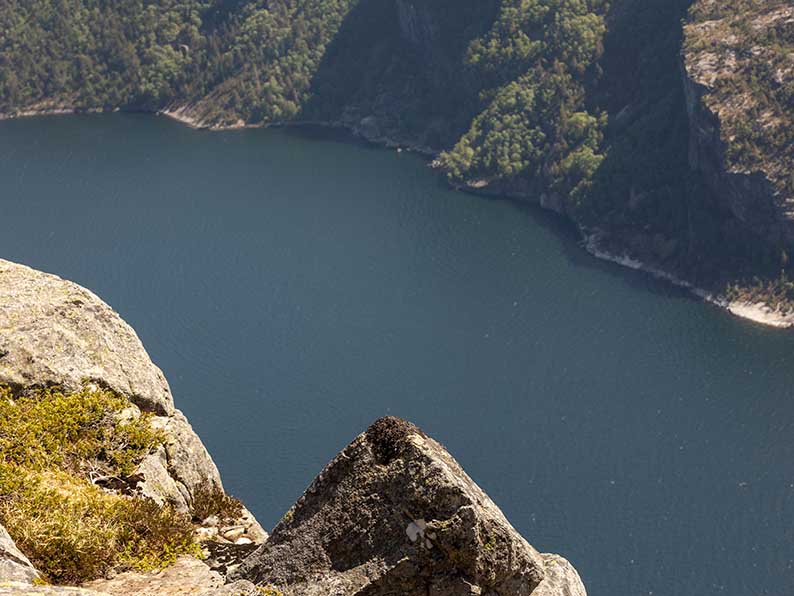
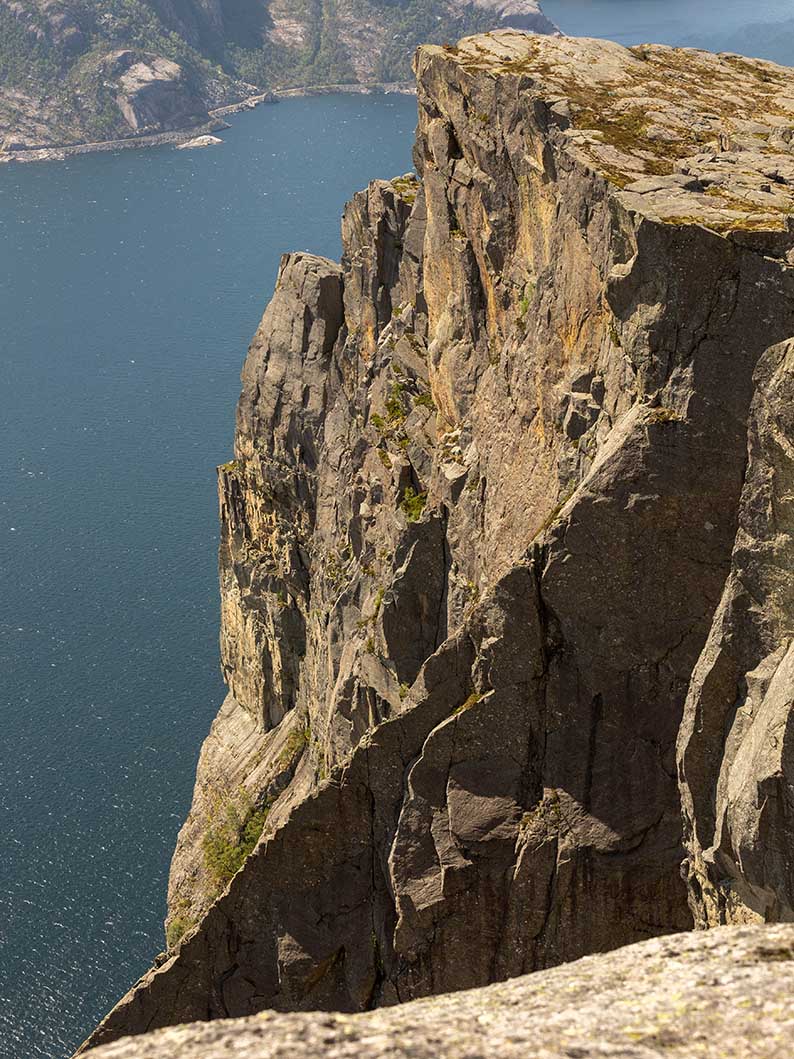
Encountered en route, this nameless platform is lower and less frequented but no less impressive than Pulpit Rock
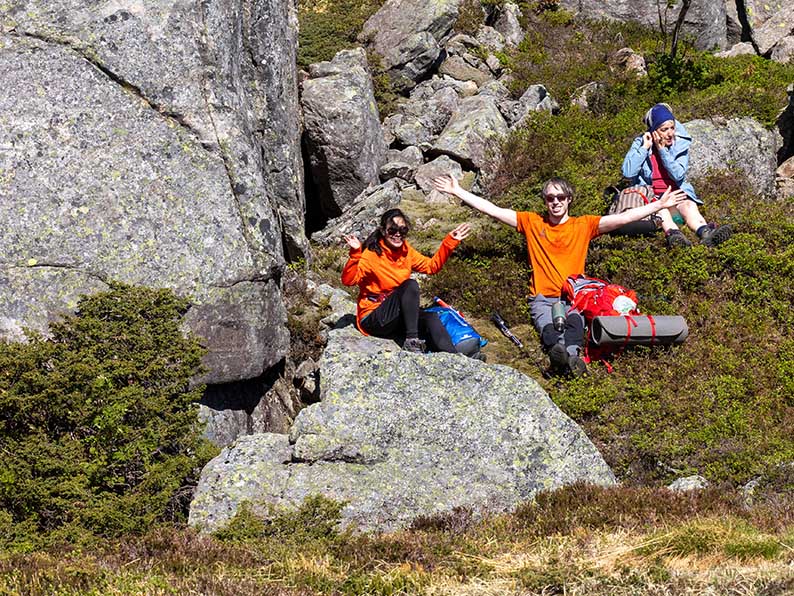
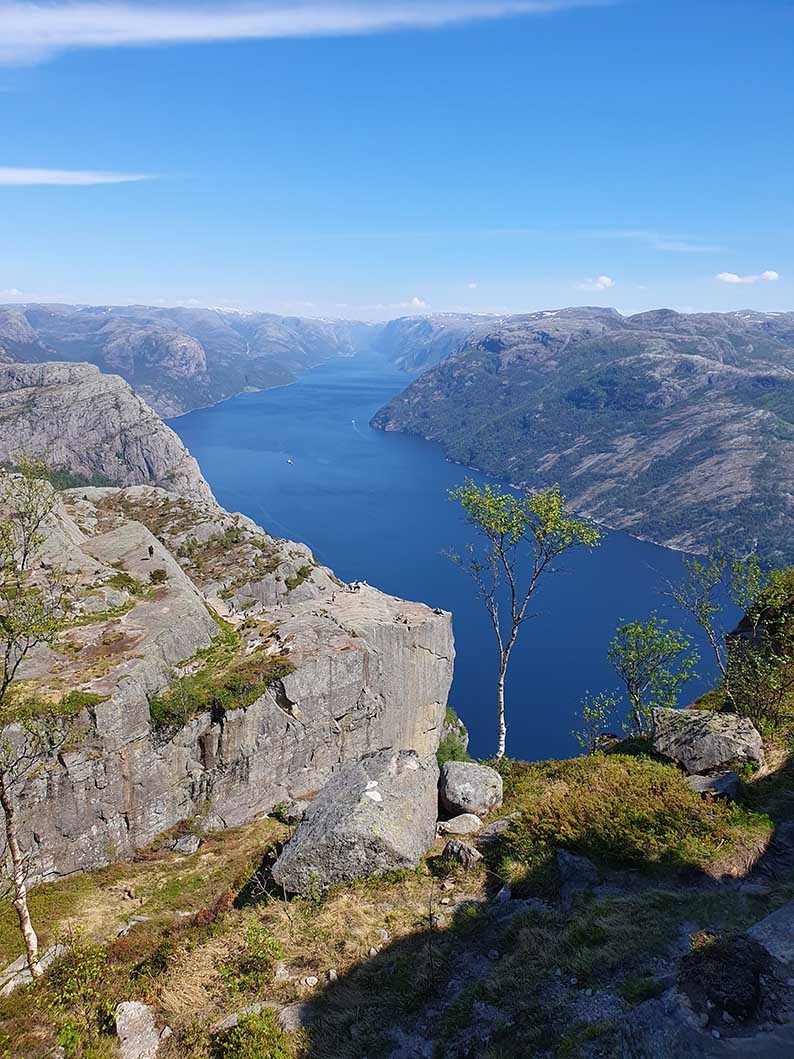
Pulpit Rock from above. Note that diagonal crack. Mark my words: one day this rock will shear off and tumble into the fjord.
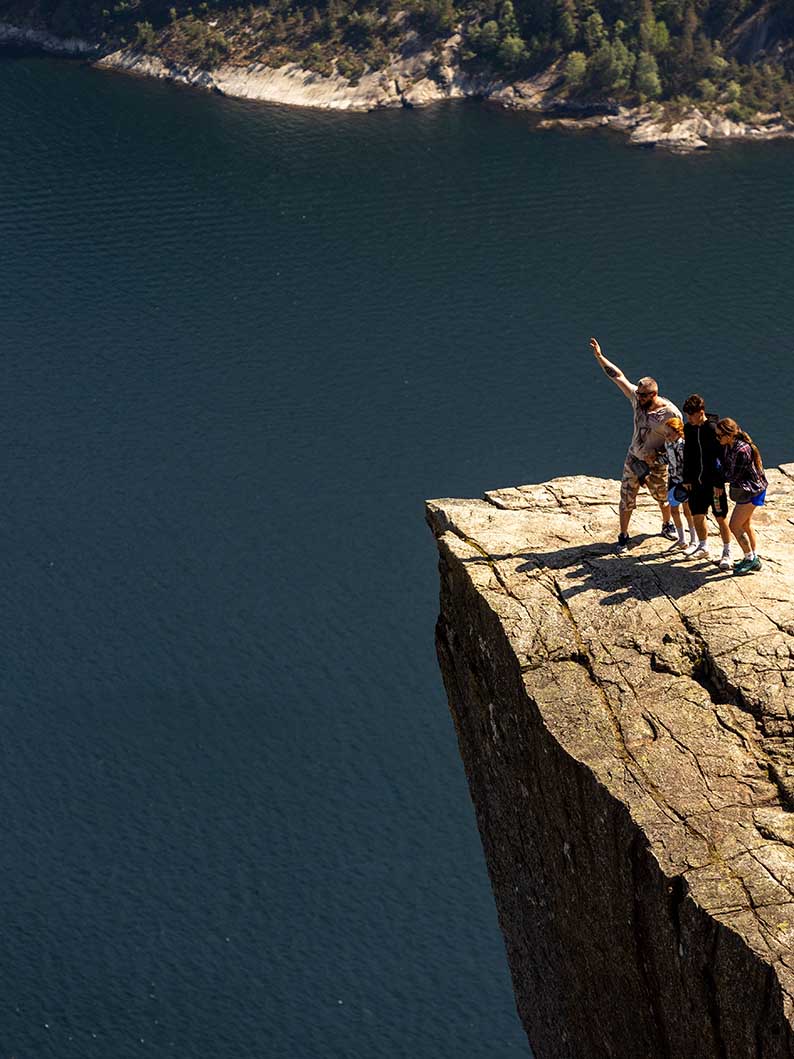

Yes, people do plummet from Pulpit Rock, by accident or design. Since we’re talking hundreds of metres sheer, the chances of survival are “believed to be zero”. This piece of redundancy is usually paired with assurances that recorded deaths are few and far between, while 300,000 a year stand on it, making it statistically safer than car travel. But they do add that bodies are not often recovered, so we only know someone fell, leapt or was pushed if a third party called it in.
Which raises the distinct possibility of unrecorded deaths – and ups the comparative safety of jumping into the jam-jar for a tootle down the road. Meanwhile and solely because I like this shot, here’s Miss Norway again.

It was six pm by the time we got back. Breaks and educational pauses aside we’d been walking a good six hours, much of it on difficult terrain that took in many rockface scrambles, with the descent – using another rarely used route to minimise encounters with the notoriously warlike homo sapiens-sapiens – as arduous as the ascent. French-lacquered was we. But blissed out.
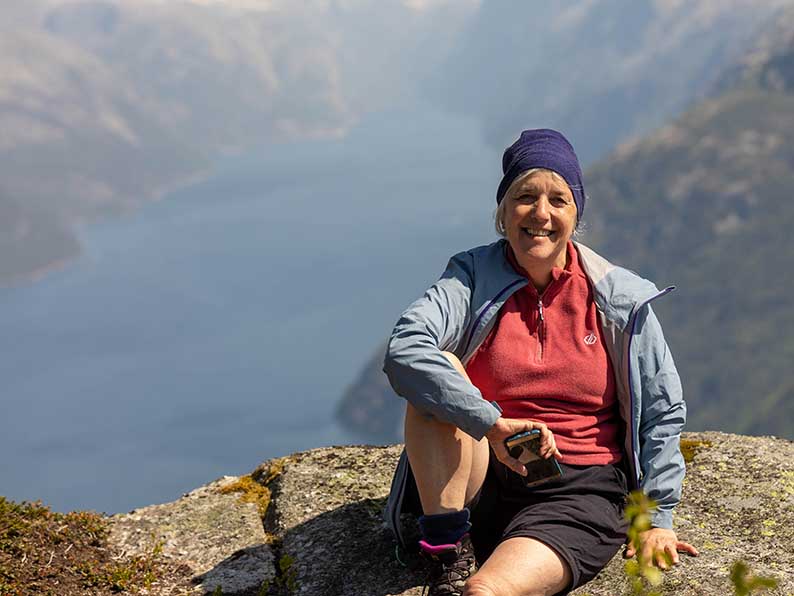
* * *

Full of envy Phil. Unfortunately, neither my knee nor my back would enable me to do what you and Jackie achieved. Well done bro – the photos are magnificent as usual
Jim
You’d still thrash me on a tennis court Jim!
Wow! What a place. Good climbing – well done.
Cheers buddy!